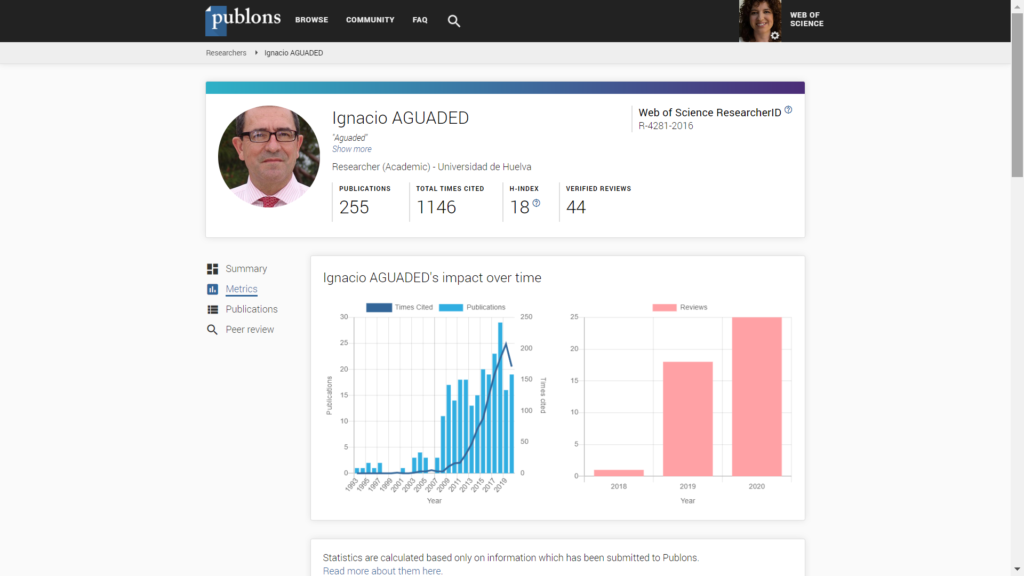Author: Águeda Delgado – Translation: Erika-Lucia Gonzalez-Carrion
The socialization and dissemination of scientific work is a necessary aspect in the whole process of academic activity. Publicizing research and maintaining contact with the scientific community contributes to the growth of science. Readers, authors and reviewers, who in many cases coincide in the same person, make use of […]
The socialization and dissemination of scientific work is a necessary aspect in the whole process of academic activity. Publicizing research and maintaining contact with the scientific community contributes to the growth of science. Readers, authors and reviewers, who in many cases coincide in the same person, make use of academic social networks to make their research profiles visible, however, until the arrival of Publons the work of the reviewer went unnoticed in these environments.
Publons emerged in 2012 to highlight the figure of the reviewer and connect them with scientific journals. It is, therefore, a virtual platform that records, validates and makes visible the scientific reviews.
To incorporate reviews to the profile of Publons, once registered, there are different possibilities:
1. The reviewer indicates that he/she has made a review in a journal and this is waiting for the journal to validate it (if the journal is registered in the platform).
2. The most recommended. Forward to Publons the thank you email received from the magazine at the end of a review. Publons will validate the email and will automatically incorporate it into the profile.
In addition to this, with the purchase of Publons by Clarivate Analytics, it merged with ResearchID, obtaining a powerful platform that integrates all the services for a researcher.

It also becomes an interesting option for journals and publishers allowing not only access to potential reviewers but also to their research curriculum.

In any case, it is an initiative with multiple advantages for both those who are starting out and established researchers, since it not only highlights the reviewer’s work, is part of the Web of Science or allows for easy links with the ORCID, but also contributes to promoting transparency in the scientific publication system through the visibility of the review process.
